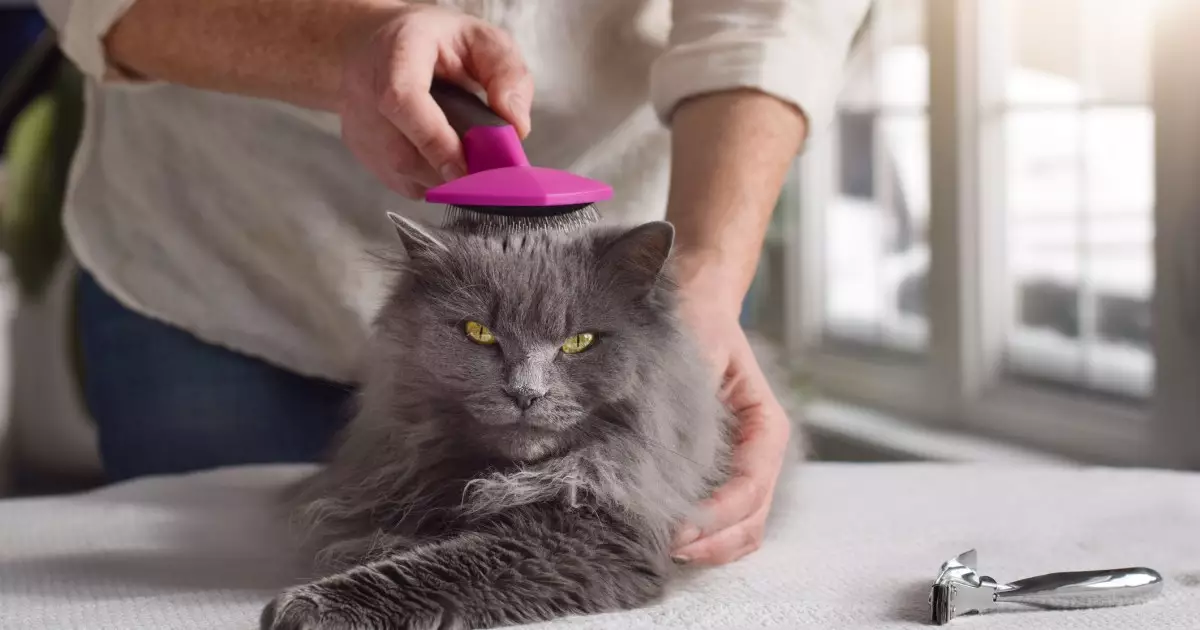Long-haired cats, with their exquisite coats and captivating presence, can be a source of joy and companionship in any home. However, owning these fluffballs comes with the responsibility of proper grooming to ensure their health and happiness. Unlike their short-haired counterparts, long-haired breeds require consistent attention to prevent matting, reduce shedding, and maintain overall cleanliness. This article aims to provide a comprehensive look into the grooming needs of long-haired cats and the best practices to keep them looking their best.
The grooming frequency and methods you employ largely depend on the specific long-haired breed you have. For instance, Persian cats boast a lavishly thick coat that necessitates daily brushing to prevent severe matting and tangling. Conversely, Turkish Angora cats, with their silky hair and lack of an undercoat, require only weekly maintenance. Understanding the unique characteristics of your cat’s fur type is crucial for effective grooming.
The Selkirk Rex is another notable example, with its unique curly coat resembling that of a Poodle. Owners should aim to comb their Selkirk’s hair a couple of times a week for optimal care. Each breed showcases distinct grooming requirements, reminding owners that one size does not fit all when it comes to cat care.
Investing in quality grooming tools specifically designed for cats is vital for successful grooming sessions. Brushes designed for fine or thick fur, dematting tools, and specialized combs should be part of your grooming kit. These tools can be easily found at local pet shops or online. Your veterinarian or groomer can also offer invaluable recommendations tailored to the needs of your specific breed. Proper tools not only make the grooming process easier but also enhance your cat’s experience and comfort levels.
Cats are generally responsive to grooming, often viewing it as a pleasurable experience. Many cats will exhibit playful and affectionate behaviors such as head-butting or purring as soon as they sense brush time is approaching. For more sensitive felines, it’s essential to introduce grooming gradually, allowing them to get accustomed to the sensation and equipment.
Creating a regular grooming schedule is essential for the well-being of long-haired cats. The more frequently you brush your cat, the less likely they are to develop mats and tangles. Moreover, consistent grooming helps minimize hairballs, a common issue among these breeds. When introducing grooming, take it slow—begin with short sessions and gradually increase the duration as your cat becomes more comfortable.
To facilitate the process, start with these techniques:
1. Allow your cat to familiarize itself with the brush by letting it sniff.
2. Always brush in the direction of the fur for a soothing experience.
3. Start at the head and work your way down the body, moving slowly.
4. Keep initial sessions brief, rewarding your cat with treats to foster positive associations.
Building a daily or weekly grooming ritual can turn what may seem like a chore into an enjoyable and bonding experience for both you and your feline companion.
Bathing is an often-overlooked aspect of grooming for long-haired cats. Though many felines can bathe themselves to some extent, certain situations may require the extra step of submersion. Cats can get into messes associated with litter or other substances, necessitating a bath. The key lies in properly acclimating your cat to water, ideally starting this process during kittenhood.
Some long-haired breeds, like Maine Coons, may take to bathing more willingly than others. Creating a comforting environment—such as warm water and gentle handling—can transform bathing from a dreaded activity into a spa-like experience for your furry friend.
Regular grooming entails more than just brushing; owners need to be vigilant about potential issues like matted fur, excessive shedding, and the condition of the paws. Long-haired cats are especially prone to having tufts of fur develop between their toes, which can hinder their mobility and affect litter box usage.
To prevent complications, you may need to trim these tufts carefully. Using specialty cat clippers—or, if you’re unsure, consulting a veterinarian—can help manage these areas without causing harm to your cat. Always prioritize patience and gentleness to avoid any accidental injuries.
While grooming long-haired cats may seem overwhelming, it is an essential part of their care that ultimately strengthens the bond between the pet and owner. With the right tools, a solid grooming routine, and a gentle approach, you can ensure that your long-haired feline remains healthy and fabulous. Remember, your efforts in grooming can transform an ordinary chore into an enriching experience that is beneficial for both you and your beloved companion.


Leave a Reply